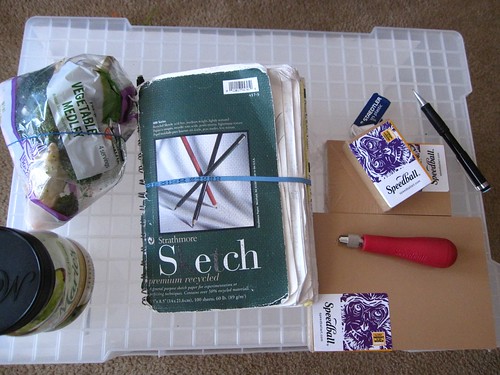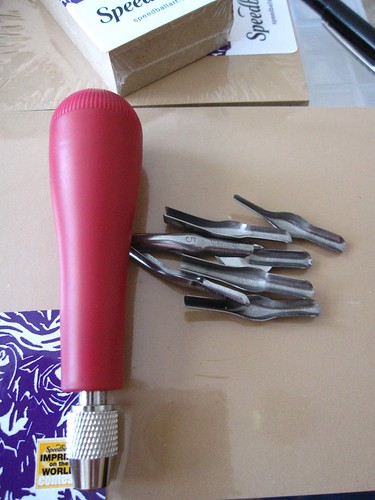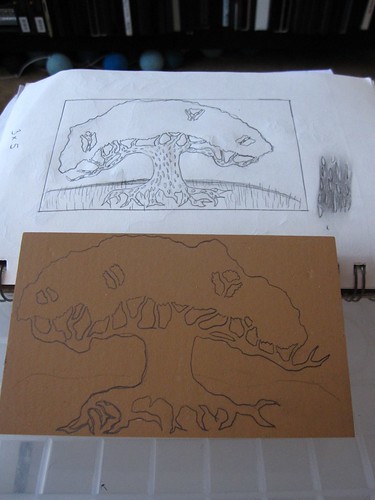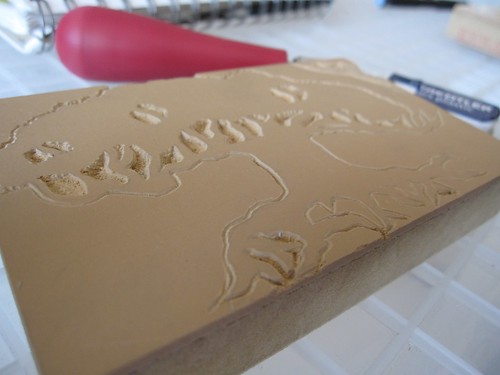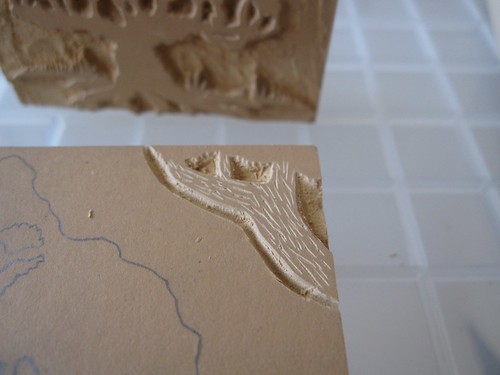First, I knew the floor was right out. I'd need to block on the bed, so that Starbuck wouldn't be able to get at it. And not because he wouldn't jump on the bed, because he will:
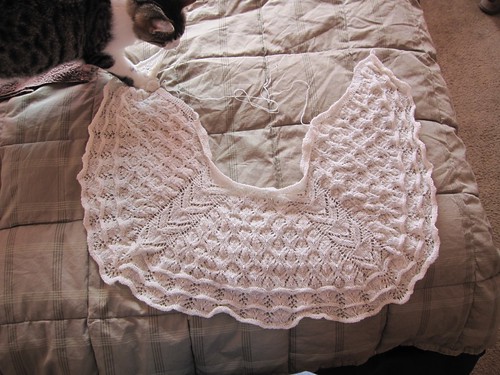
but because the bedroom has a door that can be closed.
Next, the pins situation. It's very difficult to block out knitting in a perfectly straight line with nothing but pins. I knew I really ought to use a set of blocking wires, but remembered that one can improvise with string. I couldn't remember exactly how it worked, so I looked up the Yarn Harlot's very handy post on the subject. Good thing I did, because otherwise I would have totally forgotten to put the thread in the shawl before washing the darn thing. It took me a surprisingly short amount of time to insert sewing thread along the outer straight edges, but I keep forgetting that Aphrodite is not that big of a shawl.
Aphrodite has three lovely reverse stockinette scallops running along the bottom edge, which I definitely did not want to block into points. I much preferred the look of the gently rolling edge shown in the original pattern photos. This was solved by placing the pins several rows in from the outer edge, and by not blocking the shawl too severely.

I pinned out the corners and wrapped the blocking thread around those corner pins. The thread kept things in a nice straight line, although I did put a few pins in to keep the edge from bowing in at the middle.

In the end, I only used about 50 pins total, which sounds like a lot, but really it isn't. I probably used 150-175 pins on the Honeybee. Once everything was pinned out, I made some adjustments to even out the scallop edge, then gave the whole thing a good spritz with the water bottle. It sat there for a few hours, and then came off the bed.
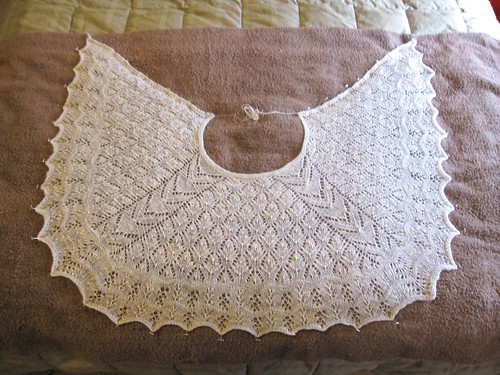
I picked my dress up last weekend and promptly tried it on with the shawl. I ended up doing an in-between size from the two printed in the pattern, to make sure that the shawl was long enough but not too long. I'm very glad that I did, because the length came out perfectly. No pictures with the dress yet, but I'll post them once I have them. I couldn't do the outfit justice with a picture-in-the-mirror photo, and future hubs has decreed he does not want to see me in the full wedding getup until the wedding day. He also occasionally reads the blog, so yeah.
The pattern was fabulously written, although you have to be able to read a chart. Beading was something I'd never done before, and although I'm not a huge fan, I can't deny the results are stunning. If this is the only piece of knitting I ever make with beads, I'm glad I put the effort into something for my wedding day.

